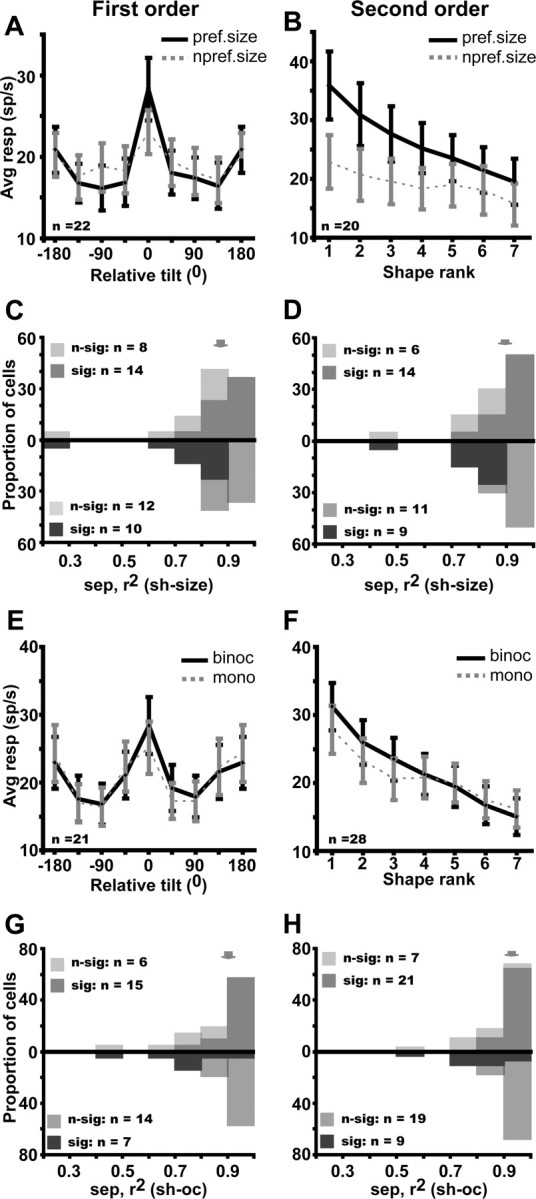Figure 8.

Size tolerance (A--D) and tolerance for ocularity (E–H) of FST neurons selective for first-order (A, C, E, G) and for second-order (B, D, F, H) stimuli. A, B, Average gross response for preferred (black solid lines) and nonpreferred (gray dashed lines) size plotted a function of relative tilt and rank in descending order of preference (both determined using preferred size). The tuning for the nonpreferred size is significant: repeated-measures ANOVA, F(7,147) = 3.49, p < 0.002 and F(6,114) = 4.58 p < 0.002 for first and second order. C, D, Distribution of the (3D shape size) separability index for first- and second-order selective neurons: median (quartiles), 0.87 (0.82–0.93) and 0.90 (0.83–0.96), respectively; light and dark hatching indicates, respectively, nonsignificant and significant neurons according to the permutation test (top row) and bootstrapping test (bottom row). Arrows indicate median values. E, F, Average gross response for preferred (black solid lines) and nonpreferred (gray dashed lines) ocularity plotted a function of relative tilt and rank in descending order of preference (both determined using preferred ocularity). The tuning for the nonpreferred ocularity is significant: repeated-measure ANOVA, F(7,140) = 8.43, p < 10−7 and F(6,162) = 18.48, p < 10−8 for first and second order. G, H, Distribution of the (3D shape ocularity) separability index for first- and second-order selective neurons: median (quartiles), 0.90 (0.81–0.93) and 0.93 (0.85–0.96), respectively, as indicated by arrows; light and dark hatching, respectively, indicate nonsignificant and significant neurons on the permutation and bootstrapping tests.
